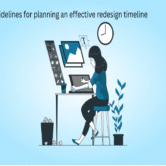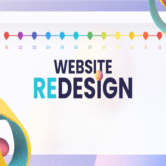
Explain how to align brochure design with brand identity.
Introduction
A brochure is not just a marketing tool—it is a physical or digital representation of a brand. To be effective, a brochure must not only convey information but also reflect the brand’s core identity in every element of its design. Aligning brochure design with brand identity ensures consistency, enhances recognition, and builds trust with the audience. From visuals and layout to messaging and tone, every detail should support and reinforce the brand image.
Use of Brand Colors
Color is a fundamental component of brand identity. When designing a brochure, use the official brand color palette consistently throughout the layout. This includes backgrounds, headlines, icons, and accents. Proper application of brand colors creates visual cohesion and helps the brochure feel like a seamless extension of the brand across platforms.
Incorporating Brand Typography
Typography is another key element of brand identity. Use the designated brand fonts for headings, body text, and calls to action. Maintain proper typographic hierarchy to guide the reader through the content while ensuring that the font choices reflect the brand’s tone—whether modern, elegant, playful, or professional.
Consistent Logo Placement
The brand logo should be strategically placed for visibility without overpowering the design. It is typically included on the front cover, back cover, and possibly on internal pages, depending on the layout. Use the correct logo version, spacing, and sizing as outlined in the brand guidelines to maintain integrity and avoid distortion.
Brand-Aligned Imagery
Images used in the brochure must reflect the brand’s visual style. Whether it’s clean product photography, lifestyle imagery, or custom illustrations, the visual tone should be consistent with the brand’s personality and values. Avoid stock photos that feel generic or off-brand, as they can dilute credibility.
Matching Tone of Voice
The brochure’s written content should echo the brand’s tone of voice. If the brand voice is casual and conversational, the brochure copy should follow suit. If it’s authoritative and formal, the language should reflect that. Alignment in tone reinforces trust and ensures a coherent communication style across all customer touchpoints.
Maintaining Layout and Design Style
The overall layout—spacing, grid structure, use of white space, and visual rhythm—should be consistent with other branded materials like websites, ads, and presentations. A clean, structured layout with familiar design patterns helps readers feel at ease and reinforces brand continuity.
Including Brand Elements and Icons
Custom graphic elements such as icons, line styles, or illustrative flourishes used in other brand materials should be reflected in the brochure. This visual consistency strengthens brand recall and allows for a more immersive experience, especially when these elements are applied with intention and subtlety.
Reinforcing Brand Messaging
The brochure should support key brand messages, whether that’s innovation, affordability, sustainability, or trust. Highlighting brand promises, taglines, and positioning statements ensures that the content does more than inform—it reinforces why the brand matters to its audience.
Adhering to Brand Guidelines
Before finalizing the brochure, review the brand’s official style guide. Adhering to established rules for color usage, logo application, type hierarchy, and layout ensures compliance with brand standards. This protects the brand’s integrity and guarantees a cohesive visual identity across all media.
Conclusion
Aligning brochure design with brand identity is essential for delivering a consistent, professional, and memorable brand experience. Every element—from colors and fonts to messaging and layout—should serve as a reflection of the brand’s personality and promise. When executed properly, a brochure becomes not just an informational tool, but a powerful ambassador of the brand itself.
Hashtags
#BrochureDesign #BrandAlignment #VisualIdentity #BrandConsistency #MarketingMaterials #TypographyMatters #BrandColors #LogoPlacement #BrandImagery #ToneOfVoice #DesignWithPurpose #StrategicBranding #PrintMarketing #BrandMessaging #GraphicDesign #MarketingCollateral #ConsistentBranding #CreativeDesign #LayoutDesign #ProfessionalBranding #BrandExperience #BrochureTips #VisualBranding #DesignGuidelines #MarketingDesign





